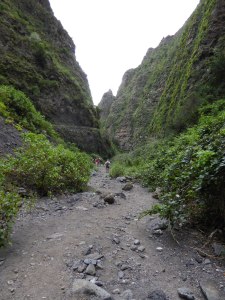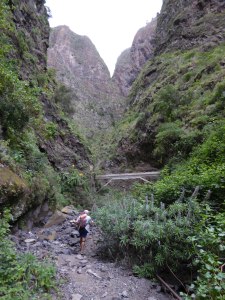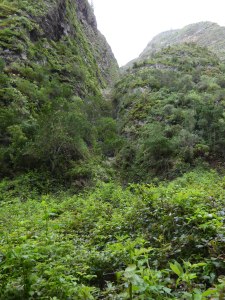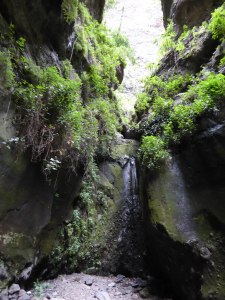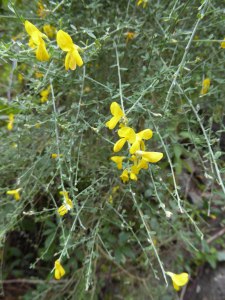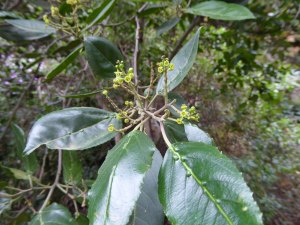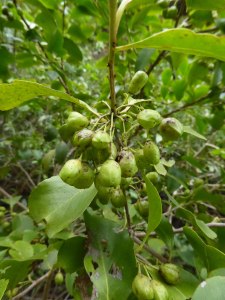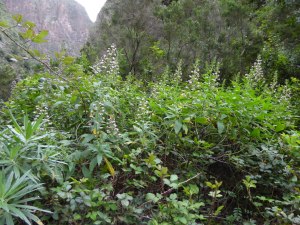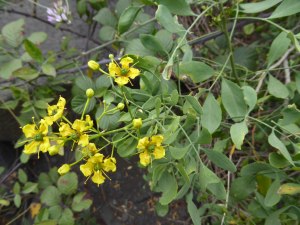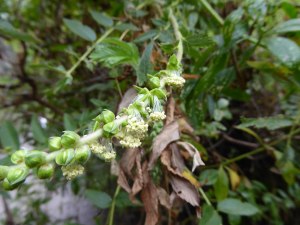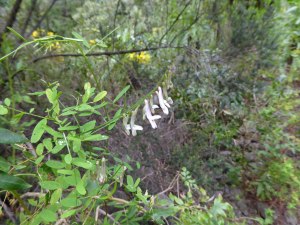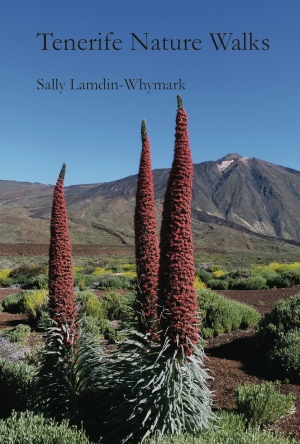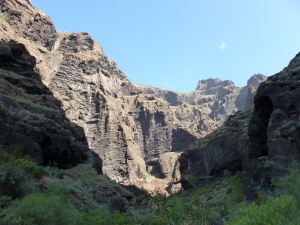
Our first view up the barranco after leaving the beach
I haven’t written in this blog about the Masca gorge, or barranco, and neither did I include it in my book ‘Tenerife Nature walks’ despite it being one of the most botanically interesting areas of Tenerife. One reason is that the gorge is very overcrowded with literally hundreds of people going both up and down, many of them not particularly suited to doing such an arduous walk, so I do not particularly want to encourage more. However, if you are interested in the botanical rarities which can be found in the gorge, and are fit enough to do the walk, it is a very rewarding experience.
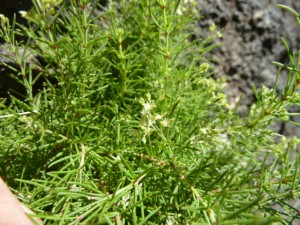
Polycarpaea filifolia, a Canary endemic found near the bottom of the gorge. Photo taken Jan 2013
This time we decided to walk up the gorge, so we took the boat from Los Gigantes to Masca beach. It was nice to do it that way, but I think if you want to look at the plants, it is probably better to do the walk downward. I was struggling to keep up with my friends and did not have time to take good photos of most of the flowers I saw, so I have used some from previous visits. The gorge has tremendous biodiversity, but I have concentrated on the ones you are less likely to see elsewhere, when choosing the photos to put on this blog.
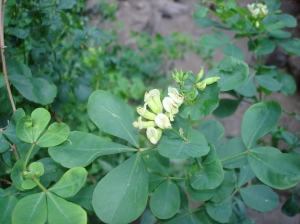
Dorycnium eriophthalmium, a rare Canary endemic shrub found a short way up from the beach. Photo taken March 2011.
I’m not going to describe the walk as once in one end of the gorge, the only way out is either the same way, or the other end! And while there may be various choices of paths in places in the barranco, you cannot get lost.
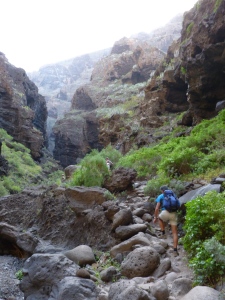
Walking up the gorge
As we went up the gorge, I am describing the plants in a bottom-up order. The first plant I was excited to see was Vieraea laevigata, a fresh green clump of a plant hanging from a side of the gorge, with yellow daisy flowers. It is a Tenerife endemic, confined largely to Teno, but a delight to see. Unfortunately, my photos did not come out!
Soon after I saw more than one dwarf shrub with soft filiform leaves and tiny white flowers, Polycarpaea filifolia.
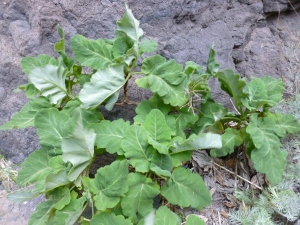
The large distinctive leaves of Salvia Broussonetii, a Canary endemic which flowers late in summer.
Higher up, on a bend in the gorge where the path is a few feet above the streamed, I was surrounded by fresh green shrubs around 1 metre high with creamy white flowers. These are Dorycnium eriophthalmium, a rare Canary endemic.
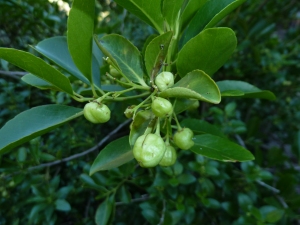
Fruits and leaves of the tree/shrub Maytenus canariensis. These plants can be seen in various places up the gorge, but I did not see any flowers or fruit this time. Photo taken Jan 2013
I began to see clumps of large crinkly and hairy leaves, about 15cm / 6 inches across. I saw them in several places up the gorge. They are the leaves of Salvia broussonetii, a rare Tenerife endemic which is confined to the Teno and Anaga regions of the island. It flowers in late summer.
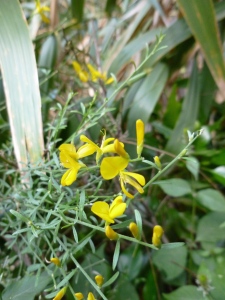
Teline osyroides, a Tenerife endemic of the broom family, largely confined to Teno and West Tenerife
Throughout the middle part of the gorge I came across several shrub-sized specimens of Maytenus canariensis which is known in Spanish as Peralillo, or little pear tree. This is because the leaves bear a resemblance to pear tree leaves, though they are stiffer and more waxy. The plant can grow to the size of a small tree. However, this year I was unable to see any flowers or fruit on them, so the photo is from 2013.
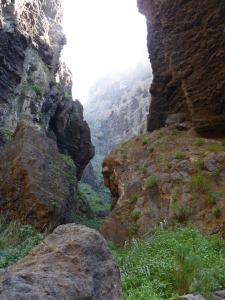
Another view of the dramatic gorge
Also in the middle part of the gorge, in various places, were the small upright shrubs of Teline osyroides, brightening up the valley with their yellow flowers.
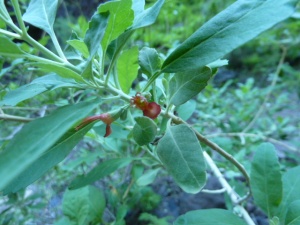
Teucrium heterophyllum, a Macronesian endemic. Photo taken Jan 2013
Previously I have seen the flowers of Teucrium heterophyllum in the gorge, fairly near the top. It is a lax grey leaved shrub, and the flowers are hard to see, under the leaves. I did not see them this time.
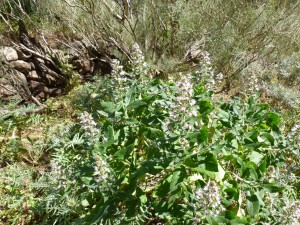
Echium strictum, a canary endemic
As we started to emerge from the gorge into the sunshine just below Masca village, we saw some specimens of Echium strictum in flower. This isn’t the most striking of the tajinastes (as the Vipers Bugloss family is called in spanish), but still an interesting plant.
We walked up the gorge in 2.75 hours, including a lunch break, but I would have liked to spend a lot longer looking at the plants and flowers, so if that is what you like doing, allow plenty of time – there’s a lot to see!











